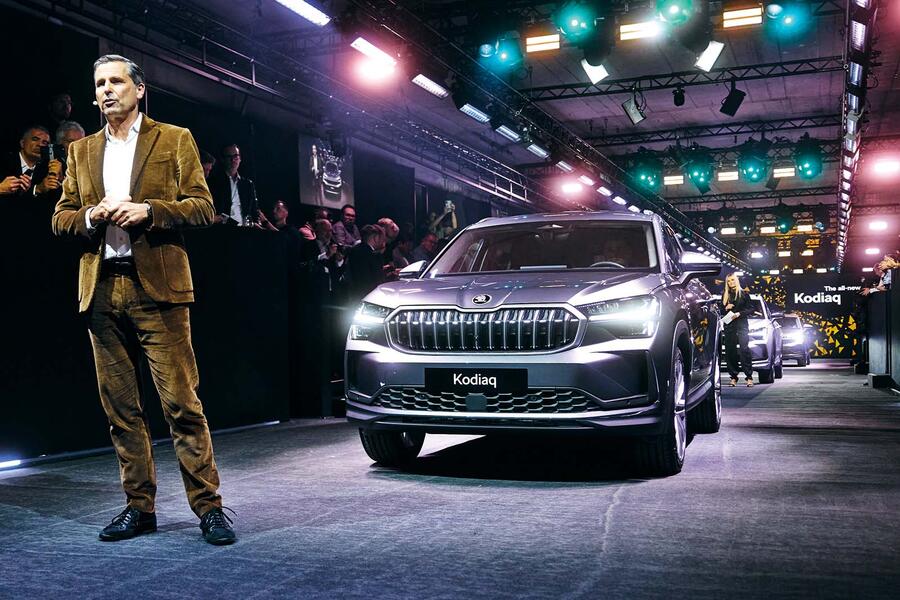The upcoming Skoda Enyaq Mk2 will feature several technical advancements, including a new ‘Unified’ battery structure developed in-house. This battery structure will be utilized across most VW Group model lines, resulting in cost savings through economies of scale.
While specific details regarding capacities and ranges have yet to be confirmed, early reports suggest that the Enyaq Mk2 will have 800V compatibility. This will allow for a significantly improved charging time, with estimates suggesting a 10-80% charge in as little as 12 minutes on average. In comparison, the current Enyaq takes around 35 minutes to charge.
VW Group CEO Oliver Blume has expressed optimism regarding this new modular approach, as it will enable a higher percentage of components to be shared between cars and brands. This scalability is expected to contribute to cost parity between electric vehicles based on the SSP platform and traditional combustion cars.
As a result, it is reasonable to anticipate a decrease in price for the next Enyaq, potentially positioning it at a similar price point as the five-seat Kodiaq. Additionally, the Enyaq Mk2 will introduce a new software stack, denoted as 2.0. This upgraded software will enhance usability and functionality, with features such as hands-free driving up to level four.
Q&A with Klaus Zellmer, Skoda CEO

Will the new Kodiaq be as popular as the last one?
“We’re hopeful that the new Kodiaq will surpass the popularity of its predecessor. However, the current landscape is different from 2016. We are introducing battery-electric vehicles, increasing complexity, offering subsidies, and providing tax advantages. The success of the new Kodiaq will depend on how these factors play out. The plug-in hybrid version with an EV range of 100km [62 miles] has the potential to attract customers who may have range anxiety and are not fully convinced about battery-electric vehicles due to their long-distance travel requirements.”
Is Skoda targeting premium players with its high-end cars?
“While it is not our explicit objective, we strive to evolve with the market and meet our customers’ expectations for haptics, quality, functionality, and intuitive design like the ‘smart dials.’ Ultimately, our focus is on providing value for money. Skoda has always emphasized offering a lot of value for a reasonable price, rather than solely being the cheapest option.”















